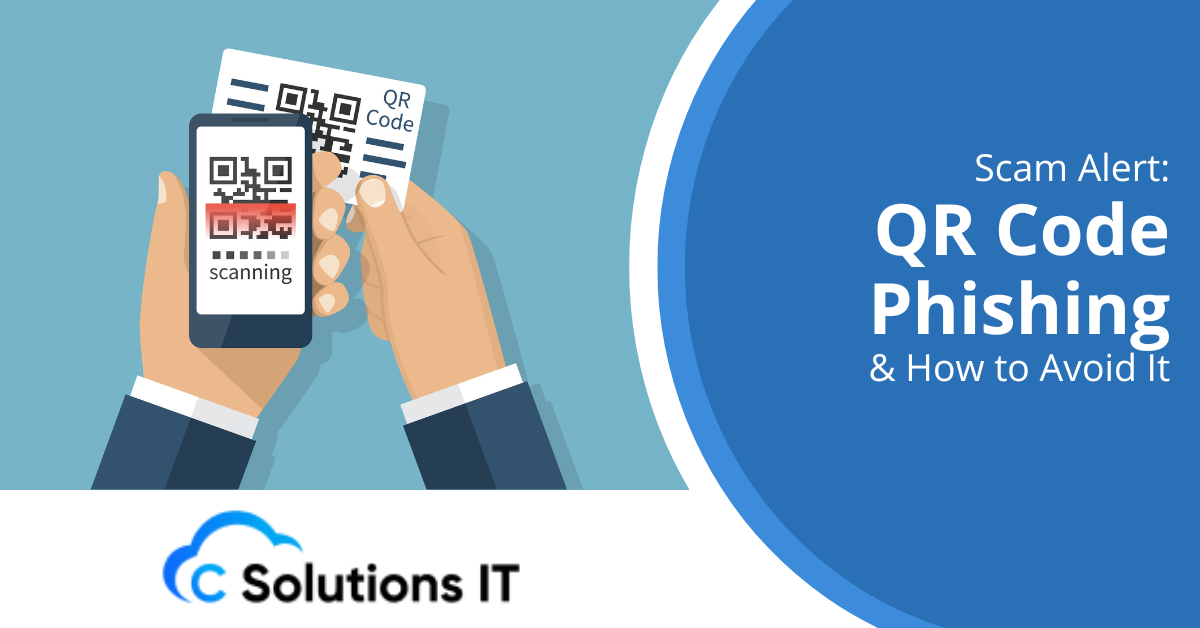Scam Alert: QR Code Phishing & How to Avoid It

In our modern digital landscape, where convenience is paramount, the rise of QR code phishing has become a concerning trend. Originally designed for swift access to information, QR codes have now become a tool for cybercriminals to exploit unsuspecting individuals, leading to potential data breaches and financial losses.
Understanding the intricacies of QR code phishing and adopting preventive measures is imperative to safeguard one’s personal and financial information from falling prey to these malicious schemes.
What is QR Code Phishing?
QR code phishing entails the use of deceptive QR codes by cybercriminals to trick individuals into divulging sensitive information or downloading malware onto their devices. These QR codes are strategically placed in various locations, including emails, social media platforms, physical advertisements, and even on stickers affixed in public spaces.
How Does QR Code Phishing Work?
Cybercriminals craft QR codes embedded with malicious links or redirects. When unsuspecting victims scan these codes, they are either redirected to fraudulent websites designed to mimic legitimate ones or prompted to download malware onto their devices. These malicious QR codes often exploit the trust individuals place in recognizable brands or institutions, making them more likely to fall victim to the scam.
Risks Associated with QR Code Phishing
QR code phishing poses multifaceted risks to both individuals and organizations:
- Data Theft: Scammers can exploit QR codes to harvest personal information, including login credentials, credit card details, and other sensitive data.
- Financial Loss: Victims may unwittingly authorize financial transactions or grant access to their bank accounts, resulting in monetary losses.
- Identity Theft: Stolen personal information can be leveraged to perpetrate identity theft, leading to further fraud and reputational damage.
- Malware Installation: Scanning malicious QR codes can facilitate the installation of malware or ransomware onto the victim’s device, compromising its security and privacy.
How to Protect Yourself from QR Code Phishing
1. Verify the Source
Before scanning any QR code, meticulously scrutinize it for signs of tampering or suspicious elements. Look for anomalies in the design, such as pixelation or irregular branding. Additionally, verify the authenticity of the sender if the QR code is received via email or messaging platforms.
2. Use Secure QR Code Scanners
Opt for QR code scanner apps developed by reputable sources. These applications often feature built-in security protocols designed to detect and alert users about potentially malicious QR codes. Furthermore, review the permissions requested by the scanner app to ensure it does not have unnecessary access to personal data.
3. Exercise Caution with Unfamiliar QR Codes
Exercise discretion when encountering QR codes from unfamiliar sources or in dubious locations, such as unsecured websites or unverified advertisements. When in doubt, refrain from scanning the code and err on the side of caution.
4. Enable Two-Factor Authentication
Enhance your security posture by enabling two-factor authentication (2FA) for accounts containing sensitive information. This additional layer of protection serves as a deterrent against unauthorized access, even if login credentials are compromised through phishing attacks.
5. Stay Informed and Educated
Stay abreast of the latest cybersecurity trends, including emerging QR code phishing techniques. Regularly educate yourself and others on best practices for online safety and cybersecurity awareness. Additionally, promptly report any instances of QR code phishing or suspicious QR codes to relevant authorities or cybersecurity organizations to mitigate fraudulent activities.
Protect Yourself
QR code phishing represents a significant threat in our digital landscape, exploiting the convenience of QR technology for nefarious purposes. By familiarizing yourself with the intricacies of QR code phishing and implementing proactive security measures, you can effectively shield yourself against potential scams and fraud.
Remember to verify the source, utilize secure QR code scanners, exercise caution with unfamiliar codes, enable two-factor authentication, and stay informed about cybersecurity best practices. Together, we can collectively contribute to creating a safer digital environment for everyone. For further guidance on fortifying your online security, contact C Solutions IT.
